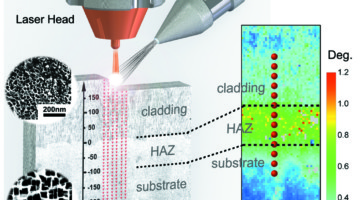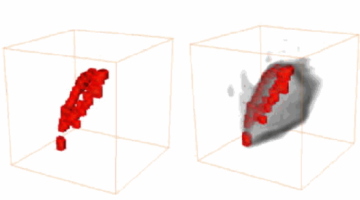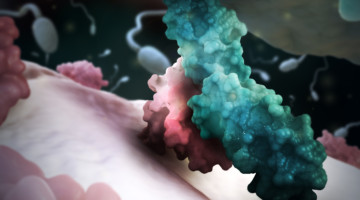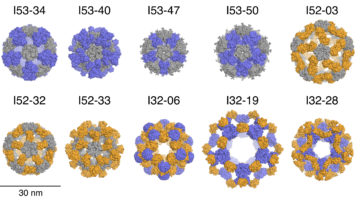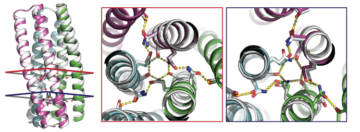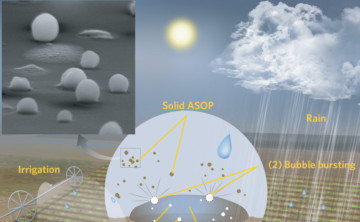Laser 3D printing is a promising way to repair machine parts (such as jet-engine turbine blades) made of single-crystal superalloys. But microstructural inhomogeneities created by the high-power laser are a major reliability concern, so researchers employed x-ray Laue microdiffraction to probe the microstructure. Read more »
Science Briefs
3D Visualization of the Behavior of Grease Additives
Lubricants help keep civilization running smoothly, but is there room for improvement? With the goal of increasing the life span and lowering the costs of all kinds of mechanical and biological systems, researchers used x-ray microtomography to visualize the behavior of grease additives under working conditions. Read more »
Understanding Barriers to Higher-Capacity Rechargeable Batteries
Vanadyl phosphate can theoretically accept twice the number of lithium ions as battery materials currently in use. In practice, however, it doesn’t live up to expectations. New research at Beamline 6.3.1 using a variety of hard and soft x-ray spectroscopies helps zero in on why. Read more »
A Molecular View of Sperm–Egg Fusion
Researchers have uncovered the first interactions between the human sperm and egg—the initial steps in the creation of human life. The discovery lays a foundation to better understand fertilization and could lead to the development of non-hormonal contraceptives. Read more »
Designed Protein Nanocages Inspired by Nature
Inspired by protein molecules observed in nature, researchers have now engineered ten large, 120-subunit, two-component protein complexes. These designed nanomaterials are attractive starting points for new approaches to targeted drug delivery, vaccine design, and bioenergy. Read more »
Formation of Toxic Furans during Combustion
Researchers predicted and observed for the first time the formation and growth of furans and other oxygenated hydrocarbons produced during combustion. These compounds can have a wide range of detrimental effects on human health, air quality, and regional and global climate. Read more »
Improving Alloy Memory by Tuning Material Composition
Shape memory alloys can “remember” their original form and return to it repeatedly when heated. To gain structural insight into a new alloy capable of sustaining millions of cycles without failure, researchers performed x-ray Laue microdiffraction at ALS Beamline 12.3.2. Read more »
Validation of Novel Proteins Inspired by Nature
Designed proteins containing hydrogen-bonding modules have been validated by crystallography and SAXS. The ability to design synthetic molecules that combine the specificity of DNA-like binding with protein function opens up huge opportunities for the fields of synthetic biology and materials science. Read more »
A Cleansing Rain Falls; a Soil-Filled Mist Arises
Rain’s reputation for cleansing the air may come with a caveat after new findings, including STXM and NEXAFS data, show that raindrops play a role in generating airborne organic particles. The findings could influence how scientists model our planet’s climate and future. Read more »
Getting to the Root of Grapevine Hydraulics
In grapevines, “root pressure” was assumed to play a role in recovering from embolisms (blockages) in a plant’s water-transport systems during drought conditions. To clarify this, researchers used ALS Beamline 8.3.2 to obtain 3D microtomographic images of grapevine stem segments detached from roots and leaves. Read more »
- « Previous Page
- 1
- …
- 17
- 18
- 19
- 20
- 21
- …
- 23
- Next Page »
